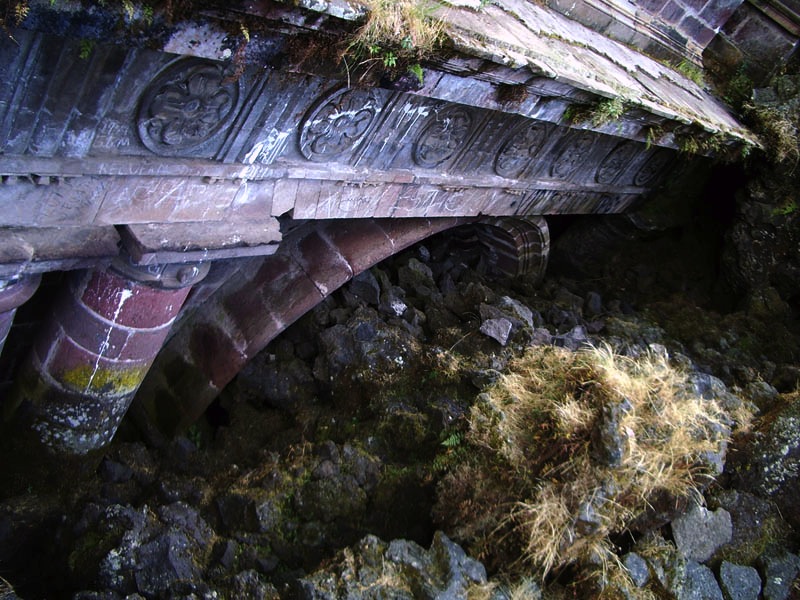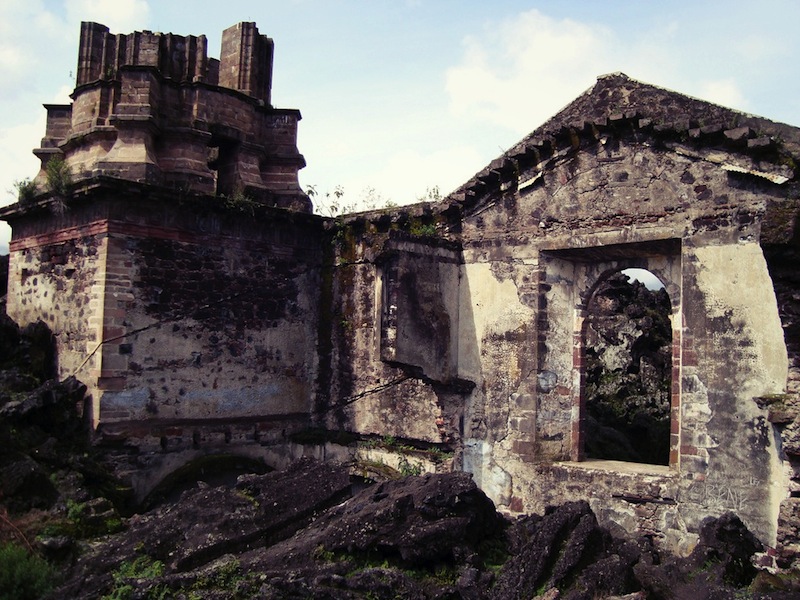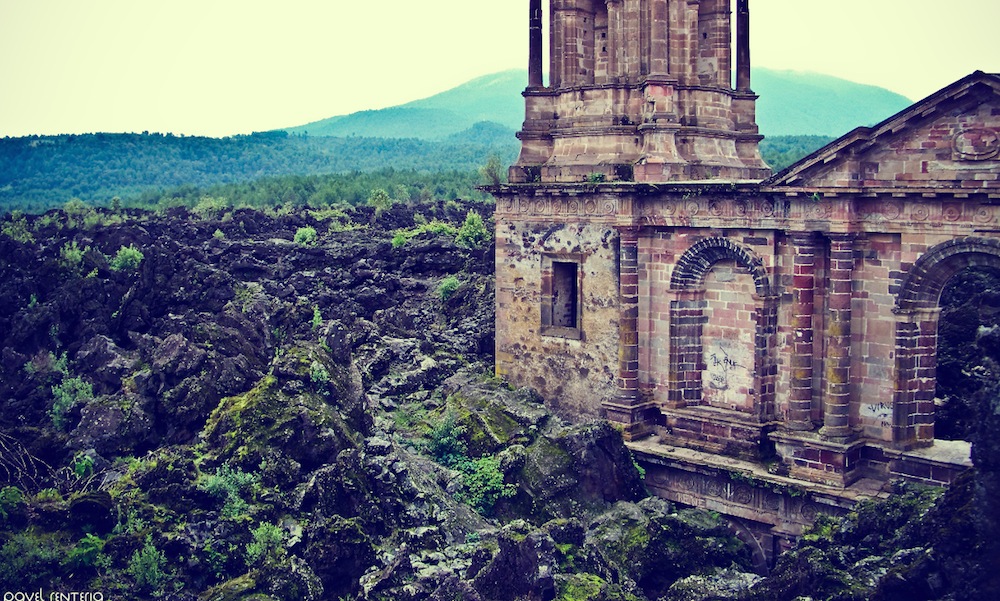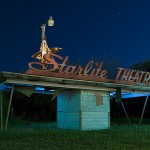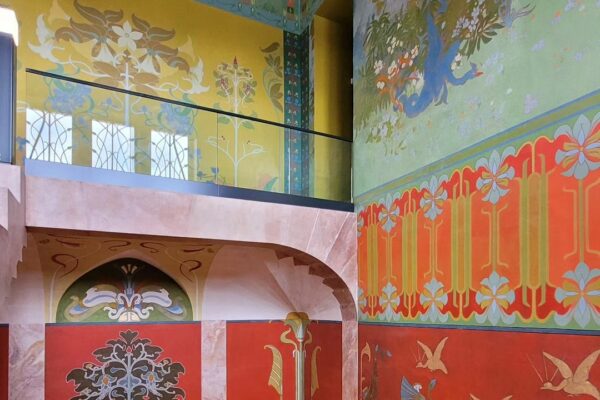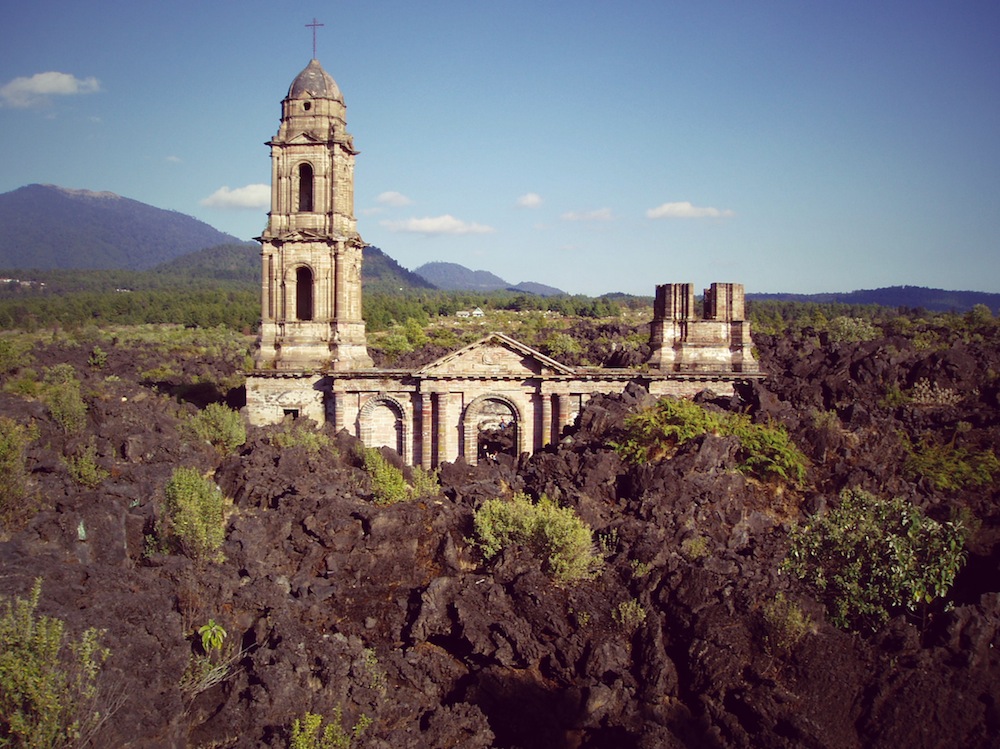
Under the black jagged valley of Western Mexico, was once an indigenous village that called this place their local church. Seemingly rising from the ashes itself, the church of San Juan Parangaricutiro is the only part of the village that was not swallowed by a near decade-long volcanic eruption.
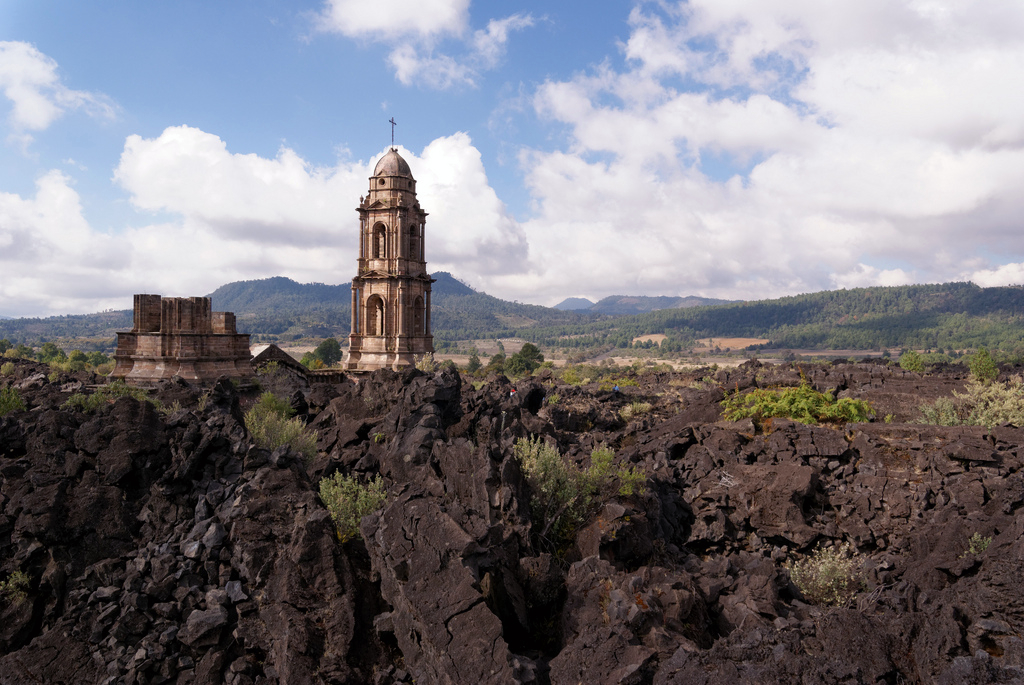
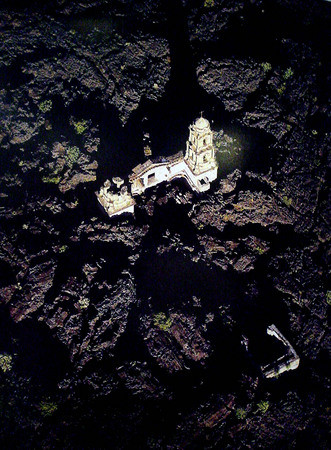
Like something out of an Indiana Jones films set, sitting two stories deep in hardened lava, this is one church that refused to be toppled by nature’s wrath. A year after the volcano first erupted in 1943, the lava eventually began to engulf the church’s cemetery walls, burying graves even deeper and swallowing all but the church facade, tower and altar. Natives recall hearing the church bells ringing as the ground shook and the volcano devoured the village.
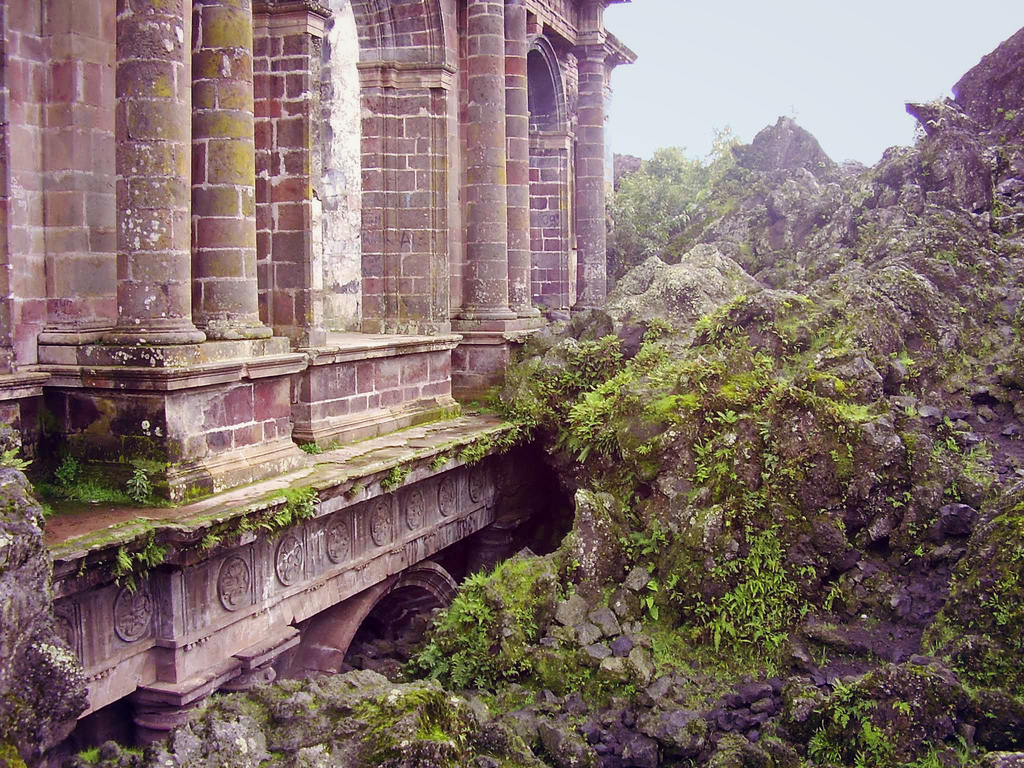
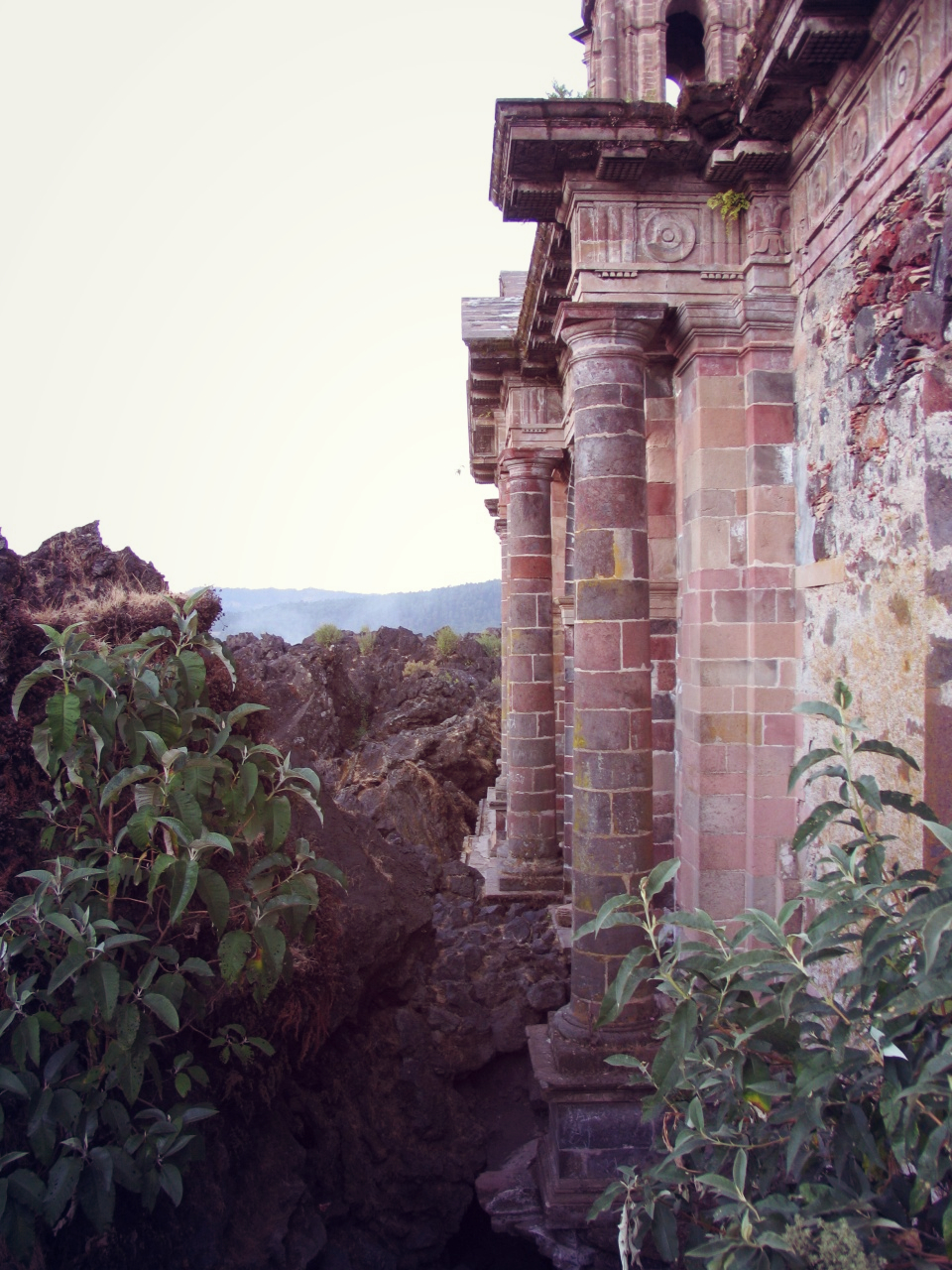
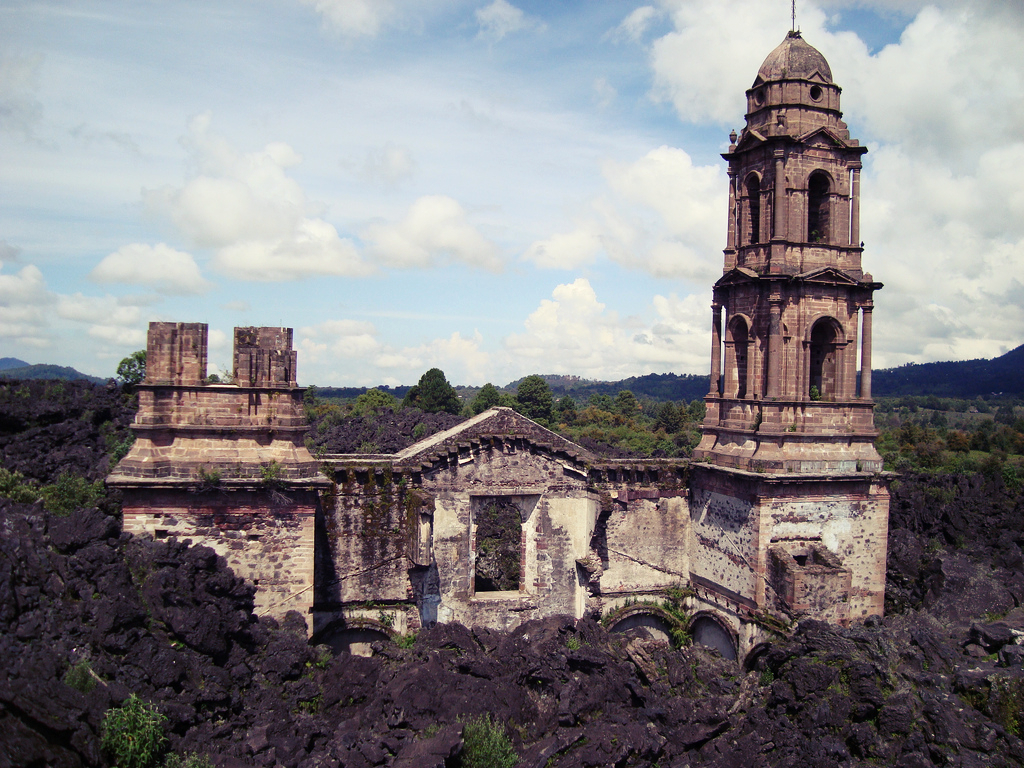
The volcano was born in a cornfield. The farmer and his wife witnessed the initial eruption of ash and stoned first-hand when they suddenly felt the earth open up and saw smoke emerge on February 20, 1943. At that moment, they knew they had lost their crops and that all the land would soon be rendered infertile.
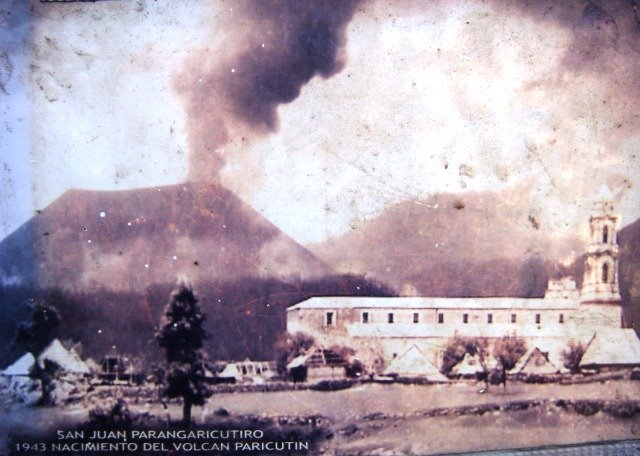
Miraculously, no one died as a direct result of the dangerous lava nor asphyxiation, but three locals died as a result of lightning strikes caused by the lightening. Residents relocated to vacant land nearby, which is now known as “Nuevo” San Juan Parangaricutiro. The image of Christ was rescued from the church and later installed in the new town’s church, where it is now known as the Miraculous Christ of San Juan.

A photo circa 1943, of the neighbouring town, Paricutin, which was also destroyed by the volcano.
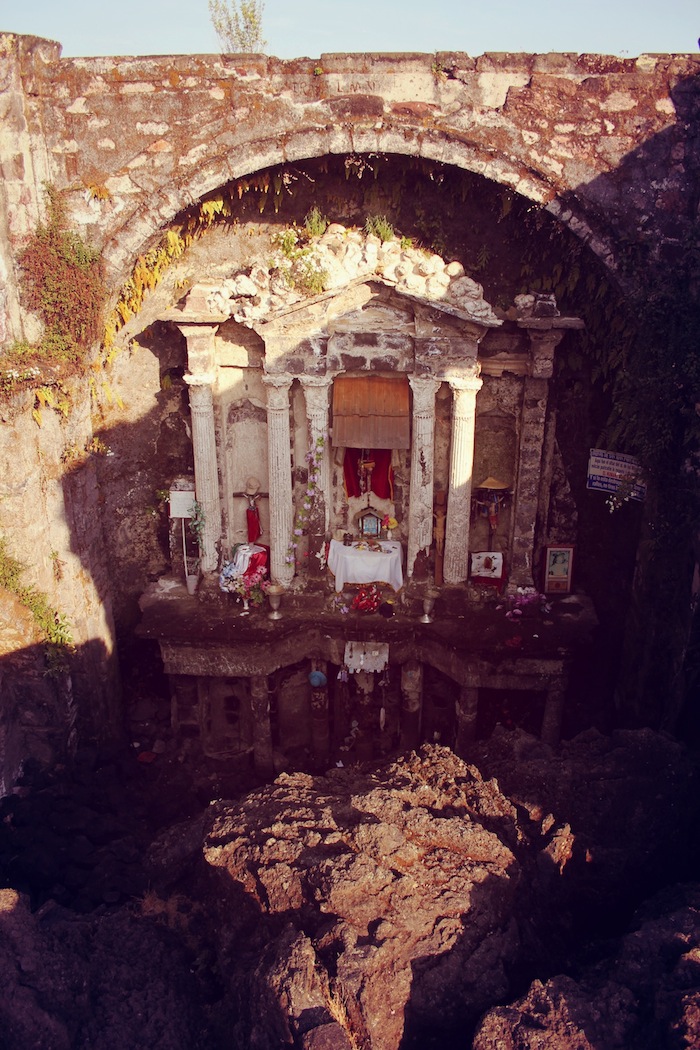
The half-buried church is now the destination of an annual pilgrimage by worshippers who believe God saved the church from the volcano. The plasterwork of the altar is still in tact and still occasionally used for impromptu services. Prayers of course, will have to be made while perched on jagged volcanic rock instead of a church pew.
